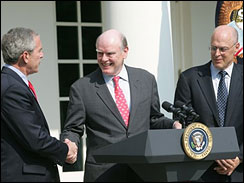Audubon Society of the District of Columbia
BIRDATHON 2006
May 13, 2006
Celebrate the diversity of resident and migratory bird species on International Migratory Bird Day (
http://www.birdday.org/) by participating in a fund-raising Birdathon to benefit the Audubon Society of the District of Columbia.
The Birdathon counting is between 5:00 a.m. through midnight. Teams will count American Bird Association (ABA) recognized species of birds within the terrestrial and nautical boundaries of the District of Columbia. Birds seen on the boundary lines with MD and VA will count.
Rules are the same as the 2005 ABA Big Day Rules with the exception of the time of the Birdathon and each bird species must be seen or heard by 2/3 of the team members. If you are a team of only two members, you both must identify the bird.
To refer to the additional rules visit here:
http://www.americanbirding.org/bigday/2005bigdayform.pdf
All teams must seek pledges for donations to the Audubon Society of the District of Columbia. Non-residents of DC may participate. Non-members of the Audubon Society of the District of Columbia may participate. Participants are recognized when their lists are submitted no later than May 20. There is no entry fee. Please create a team name and enter it with your submission. We are operating on the honor system for sightings, but the Society has the right to question and challenge unusual sightings.
Typically, ask for a pledge per bird seen or heard and tell your donors how many species you hope to target.
Winners – everyone that cares about bird conservation is a winner, but the team with the most sightings will be recognized on the Audubon Society of the District of Columbia’s Web site. Please include a team picture and your names with your submission so that you may bask in the glory of your victory.
Make checks payable to the Audubon Society of the District of Columbia.
Submit checks, team information and final counts using the ABA form to the following:
Send checks to Audubon Society of the District of Columbia, c/o Denise Ryan, Treasurer
5726 Lockwood Rd, Cheverly, MD 20785
Participation or rules questions to Denise Ryan at savetheocean@yahoo.com


